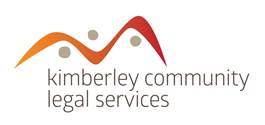Elder abuse is any action, or lack of action, deliberate or unintentional, which causes distress, harm, or serious risk of harm to an older person, or loss or damage to property or assets. Similarly, a person commits an act of abuse if they:
Cause someone else to abuse the victim
Allow someone else to abuse the victim
Cause or allow someone to participate in an act of abuse
Some instances of elder abuse can constitute a criminal offence, such as assault. Other types of elder abuse may have different legal remedies, such as a civil claim or an intervention order being issued, for example.
Types of Elder Abuse
Elder abuse can take many different forms and a person may experience more than one type of abuse. It is generally accepted that the types of elder abuse (and some examples of what constitutes that abuse) are:
Physical, such as inflicting pain or injury on a person
Psychological, such as using actions or language to intimidate a person or cause them fear or distress, depriving them of their liberty, threatening to institutionalise them or cause them physical injury, using racial or derogatory taunts
Financial, such as misusing the person's money, assets, property, or resources, improper use of planning documents such as Powers of Attorney, unlawful access and use of a person's bank account, incurring debts in the person's name without their knowledge, coercing a person to sign legal or financial documents, preventing a person from seeking or keeping employment
Social, such as isolating the person, unreasonable denial of their social, financial, or domestic autonomy, unreasonably restricting access to friends or family, and stopping social contact with others
Neglect, such as failing to provide adequate food, shelter, accommodation, clothing, and medical care to a person, refusing to allow others to provide this care to a person
Sexual, such as non-consensual sexual contact, behaviour, or language
Humbugging
"Humbugging" is an Aboriginal term used in the Kimberley to describe when someone demands money that belongs to someone else with no intention of repaying it. It is used to describe demands that are repeated, often with a threat or actual physical, emotional, or psychological abuse if the person refuses. Sometimes the term is used to describe outright theft, for example when somebody uses another person’s bank card or Centrepay arrangements without their permission.
Case Study: Rebecca
Rebecca's only income is the disability support pension, and her nephew is the contact person for Centrelink. He was demanding her payment from her outside the Commonwealth Bank each pay cycle. On one occasion, Rebecca’s nephew forced her to hand over her money which resulted in Rebecca being left with a broken arm.
KCLS can help Rebecca by advocating on her behalf with financial institutions and negotiate payments or representing her in a legal case to make sure the family member cannot gain access to her property or contact her.


